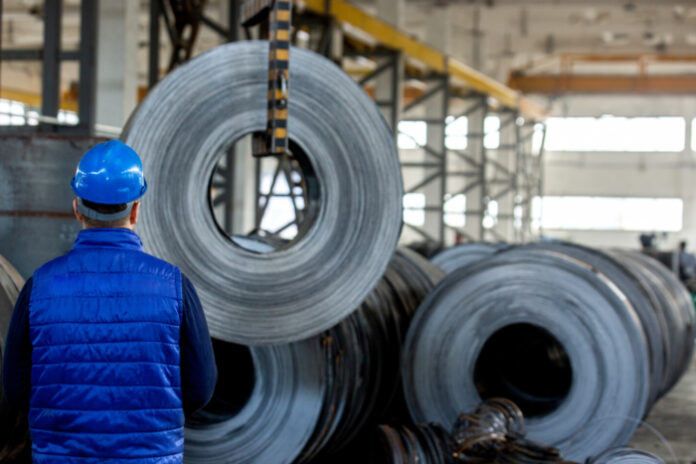
In the dynamic world of industrial applications, the adaptability and resilience of steel reels have positioned them as a fundamental component across a broad spectrum of sectors. While traditionally tethered to the wire and cable industry for their primary use in transportation and storage, the uses for steel reels have broadened, finding innovative applications that transcend their original purpose.
This exploration sheds light on the diverse and creative uses of steel reels in various industries, underscoring their versatility and significant contributions to enhancing operational efficiencies and sustainability.
Uses of Steel Reels in the Construction Industry
The construction sector has embraced steel reels for their robustness and versatility, extending their use beyond cable management. Steel reel has been ingeniously repurposed for scaffolding frameworks, temporary structural supports, and even integral components in concrete formwork systems.
Their durability makes them particularly suited to the demanding conditions of construction sites, offering a cost-effective and reliable solution for various construction needs. This innovative application optimizes resource use and contributes to waste reduction by repurposing and recycling materials.
Revolutionizing the Energy Sector
In the realm of energy, particularly within the burgeoning field of renewable resources, steel reels have played a pivotal role in transforming operational practices. Wind energy projects, for instance, leverage steel reels to efficiently handle and deploy the extensive cabling required to connect turbines to the power infrastructure.
This application streamlines the installation process, bolstering the safety and reliability of energy transmission networks. The inherent durability of steel reels ensures they can withstand the rigors of diverse environments, from the challenging conditions of offshore wind farms to the expansive reaches of solar energy installations, underscoring their value in promoting sustainable energy solutions.
Steel Reels in the Entertainment Industry
The entertainment sector, particularly in the context of large-scale events and productions, presents an unconventional yet highly effective application for steel reels. Employed to manage the extensive array of cables required for lighting, sound, and special effects, steel reels ensure the logistical aspects of event setup and breakdown are streamlined, safe, and efficient.
This application highlights the adaptability of steel reels, demonstrating their capacity to support the intricate and dynamic requirements of the entertainment industry, thereby facilitating the seamless execution of events.
Expanding Horizons in Logistics and Transportation
The logistics and transportation industry has also discovered innovative uses for steel reels, leveraging their strength and durability to optimize the handling and distribution of goods. Steel reels are secure mounting frames for transporting delicate equipment, ensuring stability and protection during transit.
This application minimizes the risk of damage and enhances the efficiency of loading and unloading operations, contributing to smoother logistics workflows and reduced operational costs.
Steel Reels in the Manufacturing Sector
In manufacturing, steel reels have found a new purpose in the organization and management of raw materials and finished products. They are robust cores for winding materials, from textiles and films to rubber and metal sheets, facilitating efficient storage, transportation, and subsequent processing.
This innovative use of steel reels in manufacturing processes underscores their contribution to maintaining product integrity and streamlining production lines, thereby boosting overall manufacturing efficiency.
The Role of Steel Reels in Environmental Sustainability
Beyond their functional applications, uses for steel reels play a significant role in promoting environmental sustainability across industries. Their durability and reusability reduce the need for single-use packaging and storage solutions, contributing to waste reduction and resource conservation.
Moreover, the recyclability of steel reels aligns with circular economy principles, further minimizing their environmental footprint. By facilitating the reuse and recycling of materials, steel reels embody sustainable practices that resonate with the growing global emphasis on environmental responsibility.
Steel Reels in Art and Public Installations
Venturing into the realm of creativity, steel reels have been repurposed as elements in art installations and public sculptures. Artists and designers have recognized steel reels’ aesthetic and structural potential, transforming them into striking pieces of public art that challenge perceptions and inspire communities.
This unconventional application showcases the versatility of the use of steel reels and contributes to cultural enrichment and the beautification of public spaces.
Future Prospects: Innovations and Developments
As industries continue to evolve, the potential for innovative uses of steel reels is boundless. Technology and materials science advancements may lead to the developing of even more durable, lightweight, and adaptable steel reels. This would further expand their applications in various sectors.
Integrating smart technologies could also enhance the functionality of steel reels, enabling real-time tracking and management of resources, thereby contributing to the advancement of smart logistics and manufacturing practices.
Conclusion
The innovative uses of steel reels across various industries underscore their adaptability, durability, and value. From construction and energy to logistics, manufacturing, and even art, steel reels have proven to be more than just a tool for cable management. They are a versatile asset that enhances operational efficiency, promotes sustainability, and inspires creativity.
As industries continue to seek innovative solutions to meet evolving demands, the role of steel reels is set to grow. This further solidifies their position as an indispensable component in the industrial and creative landscapes.
Find a Home-Based Business to Start-Up >>> Hundreds of Business Listings.
















































